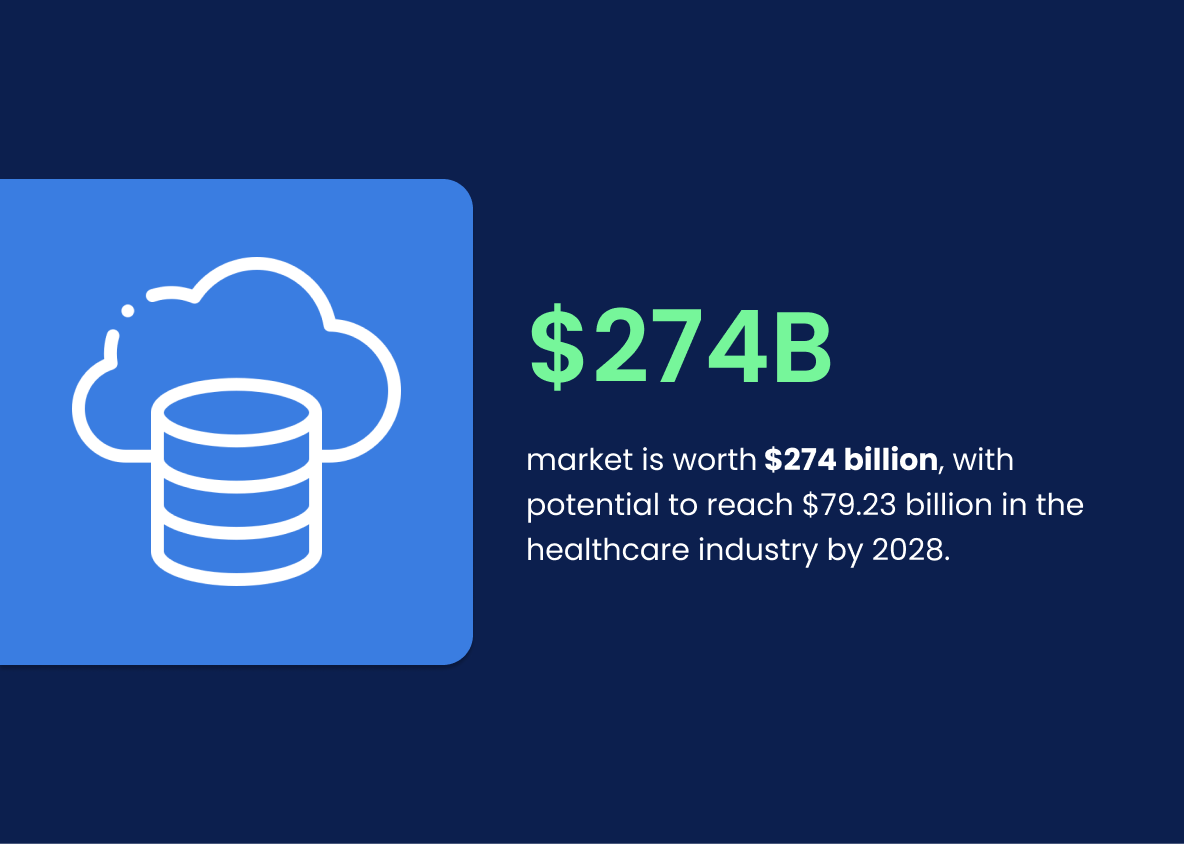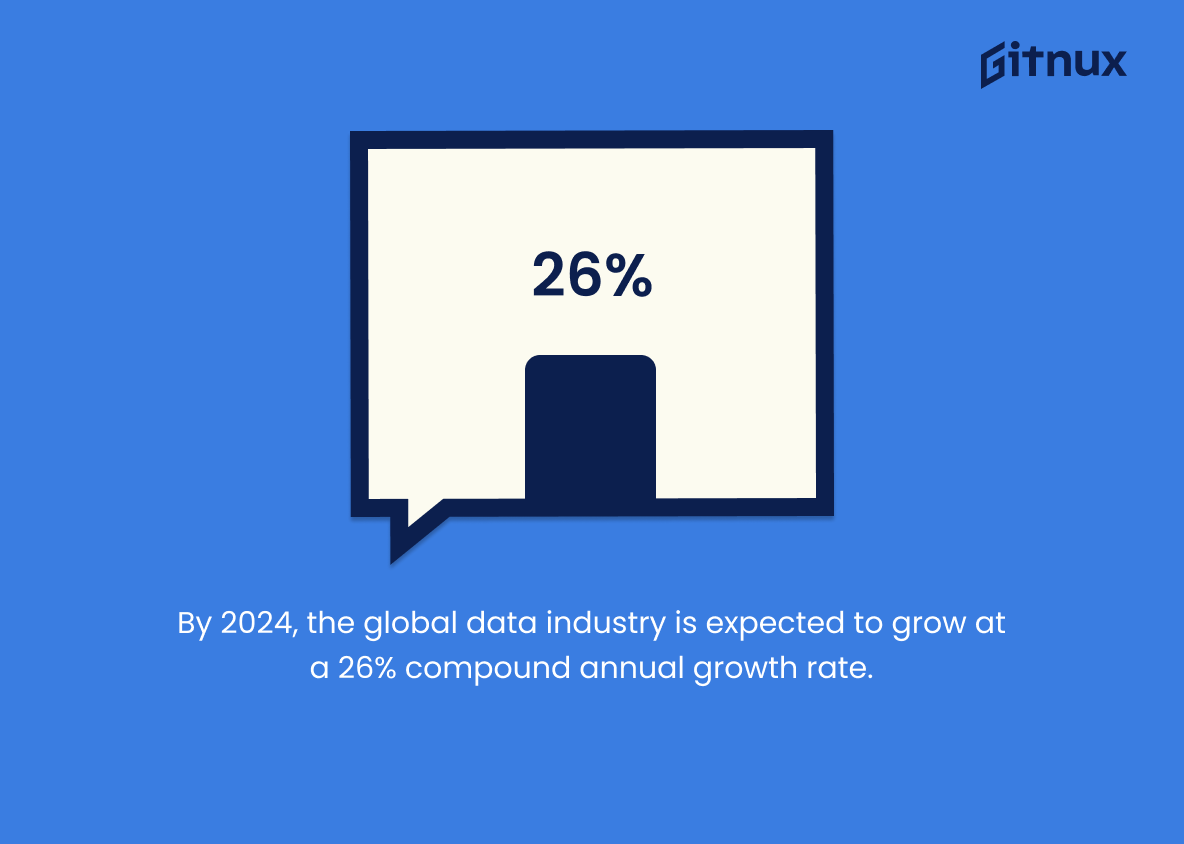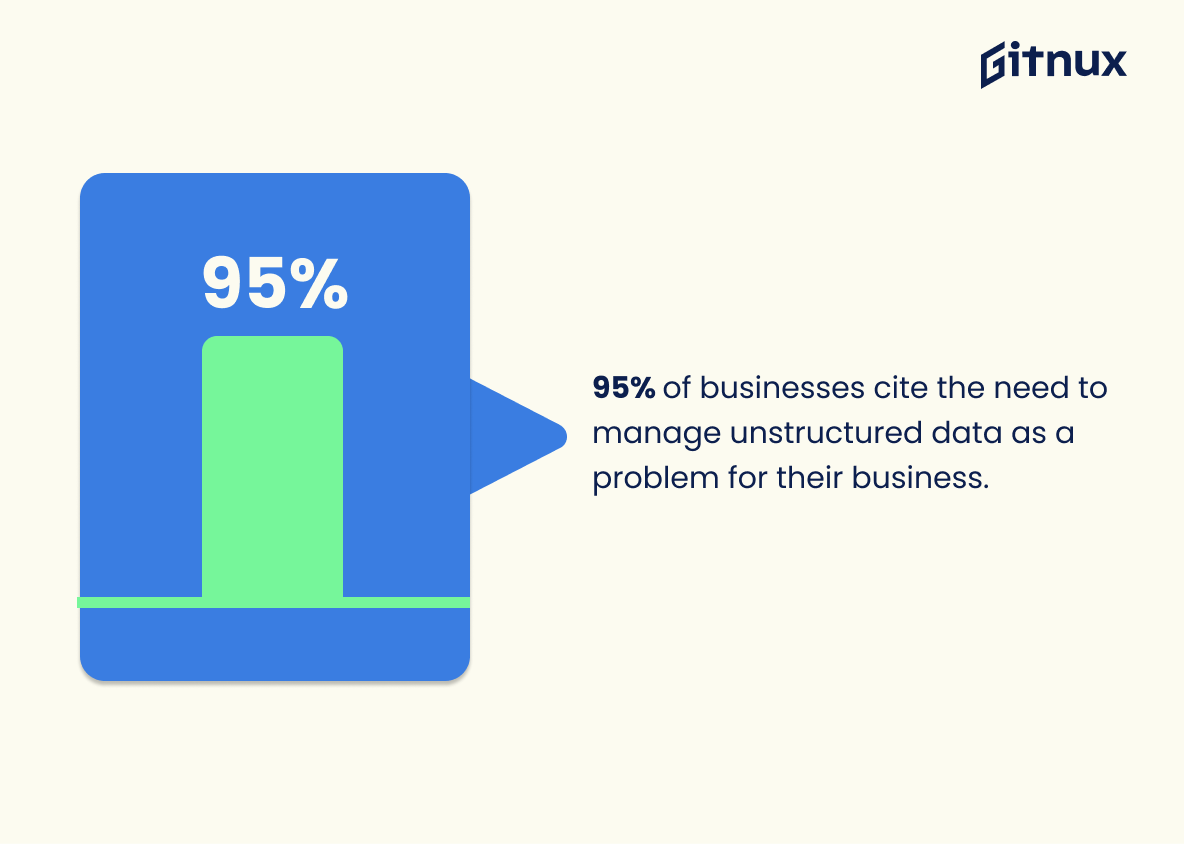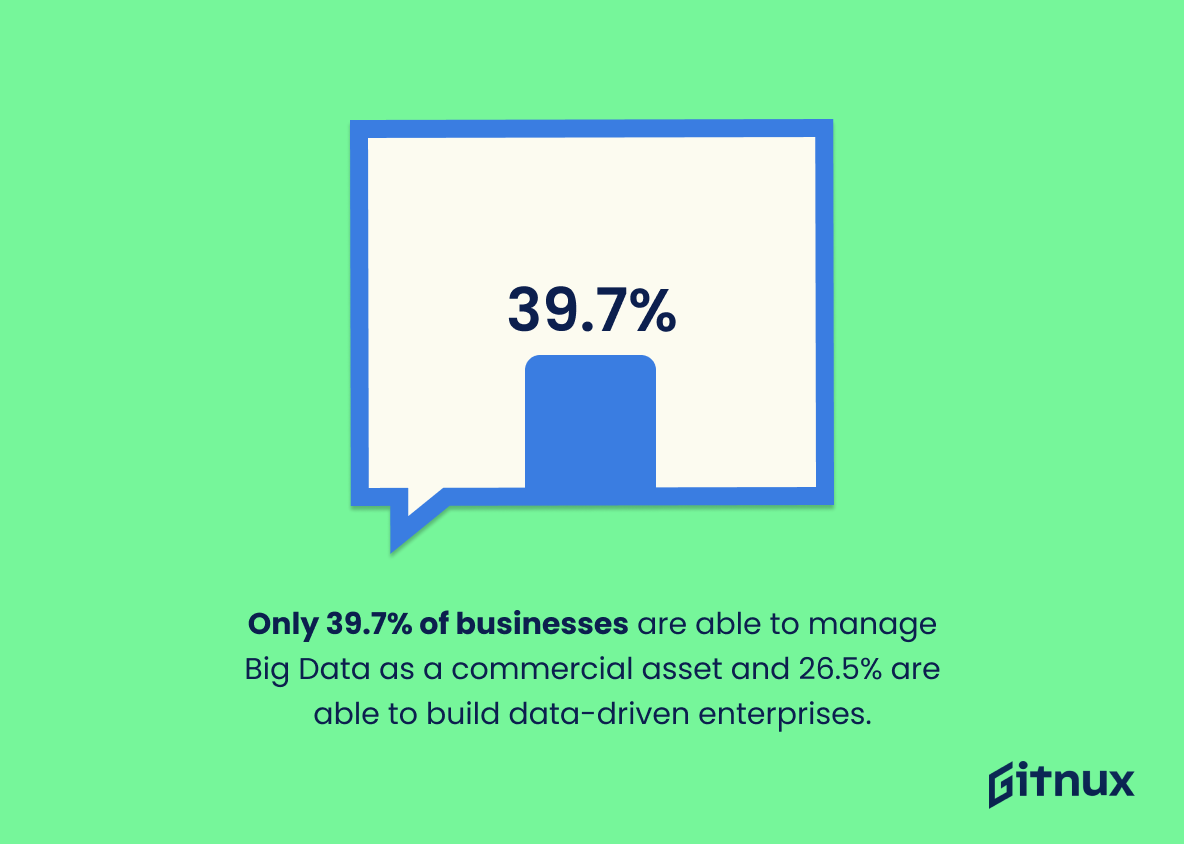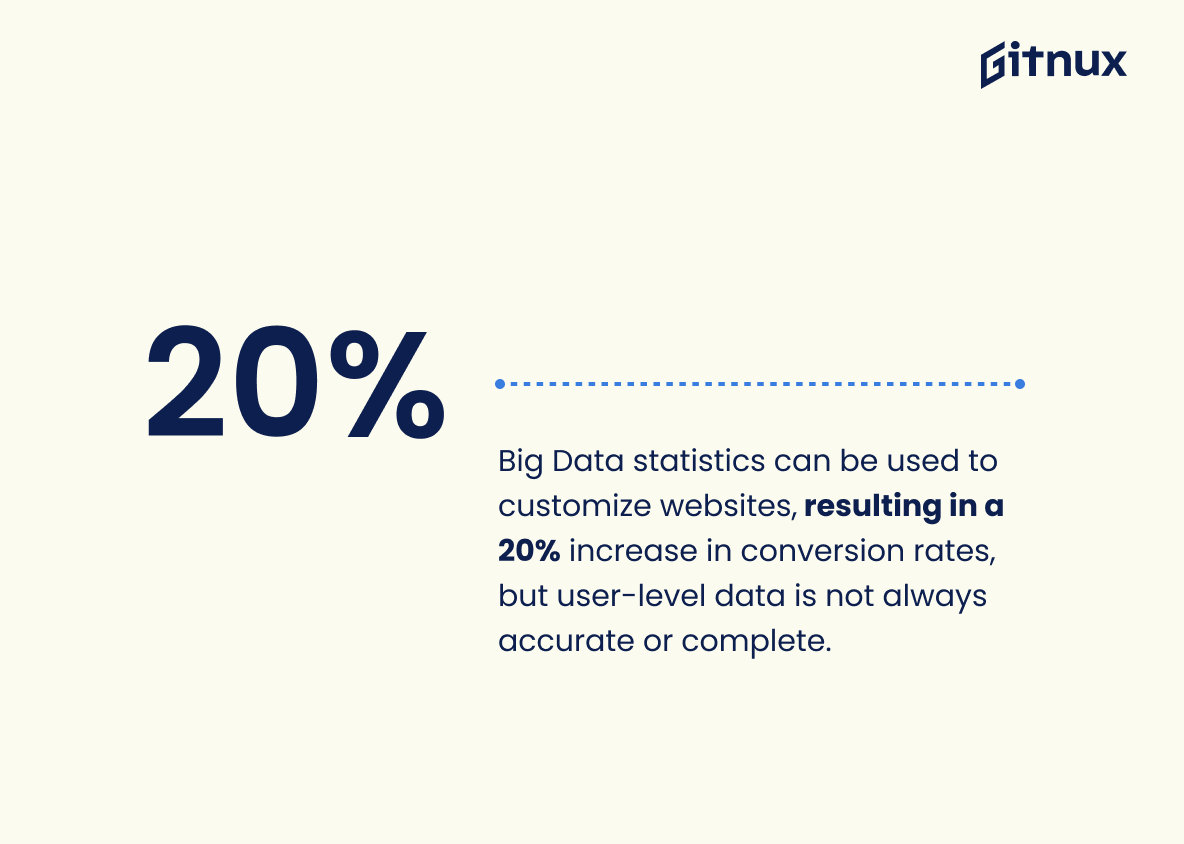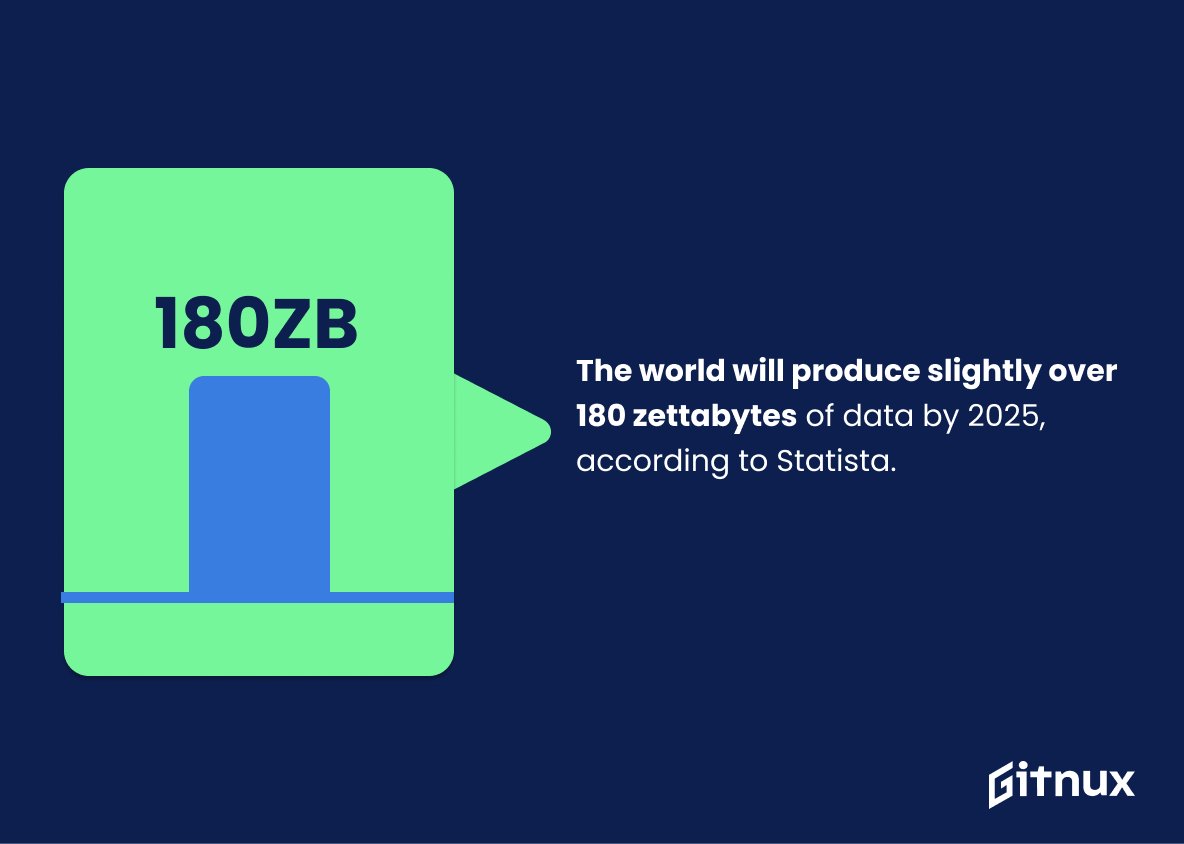Big Data has become an increasingly important part of our lives. From the way we shop to the way we interact with each other, Big Data has become an integral part of our lives. As such, it is important to understand the basics of Big Data Statistics.
In this blog post, we will explore the basics of Big Data statistics, including what it is, how it is used, and why it is important. We will also discuss some common applications of Big Data statistics and how it can be used to make better decisions. So, let’s get started.
Big Data: The Most Important Statistics
- Every day, 2.5 quintillion bytes of data are generated and the global Big Data and Analytics market is worth $274 billion, with the potential to reach $79.23 billion in the healthcare industry by 2028.
- By 2024, the global data industry is expected to grow at a 26% compound annual growth rate.
- Only 39.7% of businesses are able to manage Big Data as a commercial asset and 26.5% are able to build data-driven enterprises.
Big Data: Statistics Overview
Every day, 2.5 quintillion bytes of data are generated and the global Big Data and Analytics market is worth $274 billion, with potential to reach $79.23 billion in the healthcare industry by 2028.
This statistic demonstrates the immense amount of data being generated and the potential for businesses to capitalize on this data to gain insights and improve their operations. Additionally, the statistic shows the potential for growth in the Big Data and Analytics market, and the potential for businesses to invest in cloud computing to access and analyze this data.
By 2024, the global data industry is expected to grow at a 26% compound annual growth rate.
This shows that the industry is expected to grow significantly in the coming years. This growth is likely to create more jobs and opportunities for those who are qualified to work in the field. Additionally, it allows businesses to have an advantage over their rivals by taking advantage of the numerous advantages of Big data.
There are currently over 44 zettabytes of data in the entire digital universe.
This statistic is important because it demonstrates the sheer amount of data that is being created, stored, and analyzed on a daily basis. It highlights the need for organizations to have robust data management strategies in order to ensure their data is secure and is being used to its fullest potential. It also serves as a reminder of the importance of data security and privacy, so that the data being created and stored is not misused or abused.
95% of businesses cite the need to manage unstructured data as a problem for their business.
Unstructured data can be a major challenge for businesses. Unstructured data can be difficult to access, analyze, and store, making it hard for businesses to gain valuable insights from it. By understanding the need to manage it, businesses can better identify solutions to the problems and challenges posed by unstructured data, and make more informed decisions regarding their data usage and infrastructure.
Investments in Big Data cost savings and regulations have quadrupled since 2019. So, in 2019, only 8.3% of investment decisions were driven by defensive concerns. In 2022, defensive measures made up 35.7% of Big Data investments.
These numbers show how Big Data investments are increasingly being driven by defensive concerns. With the rapid rise of data breaches and cyber-attacks, organizations are now investing more in Big Data security and compliance in order to protect their data and ensure their compliance with regulations. This is a sign of the growing importance of Big Data security and compliance, and highlights the need for organizations to invest in these areas in order to stay competitive.
Organizations have improved their decision-making capabilities by 37% through the use of Big Data.
This statistic shows that organizations are able to make more informed decisions when they use Big Data. This is important because it allows organizations to make decisions that are more likely to lead to financial success. Additionally, it shows that organizations should not prioritize generating financial gains from technology, but rather focus on streamlining procedures and generating revenue through alternative channels.
97.2% of organizations are investing in big data and AI.
Organizations are recognizing the potential value of big data and AI, and are investing in technologies that will help them better understand, analyze, and utilize their data. This can help organizations gain a competitive edge, improve operational efficiency, and uncover new insights. AI and big data can also help organizations automate certain tasks, freeing up resources for other activities.
Only 39.7% of businesses are able to manage Big Data as a commercial asset and 26.5% are able to build data-driven enterprises.
This means that almost every industry and business sector is using Big Data. But there is still a large gap between those who are able to manage and use it effectively and those who are not. This indicates that there is still a need for more education and training in the area of Big Data, so that businesses can better leverage the data they have to make informed decisions and gain a competitive advantage.
Big Data statistics can be used to personalize customer interactions, protect assets from misuse, and optimize field operations. Big Data Statistics are important for businesses to understand and utilize because they can provide insights into customer preferences and behaviors, protect assets from misuse, and optimize field operations for increased productivity and efficiency.
Big Data statistics can be used to customize websites, resulting in a 20% increase in conversion rates, but user-level data is not always accurate or complete.
This statistic highlights the potential of Big Data to improve marketing outcomes, but also the need to be aware of the limitations of user-level data. By understanding the potential of Big Data and the limitations of user-level data, marketers can make informed decisions about how to best use Big Data to improve their marketing outcomes.
50% of US executives and 39% of European executives said budget constraints were the primary hurdle in turning Big Data into a profitable business asset.
This demonstrates the challenges that companies face when trying to leverage Big Data for business gain. It shows that budget constraints, in particular, are a major roadblock for companies, both in the US and in Europe. This information can help companies better plan and allocate resources, as well as identify potential solutions to address the financial challenges associated with Big Data.
The US alone has 2,749 data centers, almost twice as many as the UK, Germany, and China combined. These data centers offer vital cloud, managed, and colocation data services.
Data centers play a vital role in our digital economy. They enable companies to store and access their data, while also providing the necessary infrastructure to power their applications. By understanding the number of data centers available in each region, businesses can ensure they are choosing the right location for their data needs. This can be especially important for international companies, as the number of data centers in each region can affect the speed and reliability of their services.
The world will produce slightly over 180 zettabytes of data by 2025, according to Statista.
This statistic shows the exponential growth of data production and the associated challenges that come with it. With data production increasing at such a rapid rate, businesses and organizations must develop strategies to store, manage, and utilize this data. This statistic also highlights the need to develop data literacy and data science skills, as well as the need to invest in data infrastructure, in order to keep up with the pace of data growth.
Supplementary Statistics
By 2025, the global volume of Big Data generated will cross 180 zettabytes (180 trillion gigabytes).
This is a reminder of the sheer potential of Big Data and the opportunities it presents to businesses and organizations. It is a sign of the times, and a reminder of the importance of staying ahead of the curve when it comes to leveraging Big Data for competitive advantage.
Every day, around 2.5 quintillion bytes of data are generated.
The global Big Data market is projected to reach $274.3 billion by 2022.
Businesses that use Big Data efficiently are known to experience a 10% or more increase in revenue.
Businesses that leverage Big Data can expect to see a significant boost in their revenue. This is an incredibly attractive prospect for any business looking to increase their profits, and it serves as a strong incentive to invest in Big Data solutions.
An estimated 1.7 megabytes of new data will be created every second, for every person on the planet, by the end of 2022.
It highlights the need for businesses to be prepared to handle the influx of data and to make use of it in order to stay competitive. It also serves as a warning to individuals to be mindful of the data they are creating and how it is being used. With the right strategies in place, this data can be used to create meaningful insights and drive innovation.
90% of the world’s data was generated in the last two years.
This highlights the exponential growth of data production and the importance of understanding how to effectively manage and utilize this data.
Big Data adoption among companies reached 59% in 2021, up from 17% in 2015.
More and more companies are recognizing the potential of Big Data and are investing in it to gain a competitive edge. This is a clear indication that Big Data is here to stay and is becoming an integral part of the business landscape.
Investment in Big Data and AI initiatives by telecom companies is expected to reach $36.7 billion by 2025.
Telecom companies are investing heavily in these technologies, which is a clear indication of their confidence in the transformative power of Big Data and AI.
82% of Big Data projects are known to fail, primarily due to poor planning and lack of expertise.
There is a need for organizations to invest in the right resources and expertise to ensure the success of their Big Data initiatives. It also serves as a warning to organizations that may be tempted to take shortcuts when it comes to Big Data projects, as the consequences of failure can be costly.
Hadoop, an open-source software framework for Big Data storage and processing, will reach a market value of $84.6 billion by 2021.
The market is recognizing the value of Big Data and the importance of Hadoop in helping organizations make the most of their data. This statistic is a clear indication that Big Data is here to stay and that Hadoop is a key player in the industry.
73% of organizations have already invested or plan to invest in Big Data.
Big Data is becoming increasingly important in the business world, and that organizations are taking it seriously. It also suggests that Big Data is here to stay, and that it will continue to be a major part of the business landscape in the future.
Real-time analytics, driven by Big Data, is expected to grow to over $30 billion by 2025, at a CAGR of 12.5%.
The market for these technologies is expected to expand exponentially over the next few years, indicating that businesses and organizations are increasingly recognizing the value of leveraging Big Data to gain insights and make better decisions. This is an exciting development that could revolutionize the way we do business and make decisions.
More than 67% of companies believe implementing Big Data initiatives has been a significant challenge.
The majority of companies are struggling to make the most of their Big Data investments, highlighting the need for better strategies and resources to make the process easier. This is an important point to consider when discussing the potential of Big Data and the challenges that come with it.
Big Data analytics adoption in the manufacturing industry is forecasted to grow at a CAGR of 21.9% from 2021 to 2028.
This speaks to the potential of Big Data analytics to revolutionize the manufacturing industry, and serves as a reminder of the importance of staying up-to-date with the latest trends in Big Data analytics.
It is estimated that the Internet of Things (IoT) will generate 79.4 zettabytes of data annually by 2025.
With 79.4 zettabytes of data being produced annually, it is clear that the IoT will be a major contributor to the ever-growing pool of big data. This statistic is a reminder of the importance of understanding and utilizing big data in order to stay ahead of the curve.
85% of businesses consider data to be their organization’s most valuable asset.
This statistic is especially relevant in the context of a blog post about big data statistics, as it serves to emphasize the importance of leveraging data to gain a competitive edge.
77% of IT professionals believe that Big Data can help improve their organization’s cybersecurity posture.
Most IT professionals recognize the value of Big Data in improving their organization’s security posture, and are willing to invest in the technology to make it happen. This is a clear sign that Big Data is here to stay, and that organizations should take advantage of its capabilities to protect their data and systems.
The financial sector will allocate around 48% of its IT budget to Big Data analytics by 2026.
The sector is investing heavily in Big Data analytics, recognizing its potential to revolutionize the way they do business. This is a clear indication that Big Data analytics is here to stay and will continue to be a major part of the financial sector’s operations in the years to come.
Less than 0.5% of all data generated is analyzed or used, leaving significant room for growth in Big Data analytics.
With such a small fraction of data being analyzed, it is clear that there is a wealth of insights and opportunities that remain unexplored. This statistic serves as a call to action for businesses to take advantage of the power of Big Data analytics and unlock the potential of their data.
Conclusion
In conclusion, Big Data Statistics is a powerful tool that can help businesses and organizations make more informed decisions. It can provide insights into customer behavior, market trends, and other important information.
With the right tools and analysis, Big Data Statistics can be used to improve decision-making and increase efficiency. As the technology continues to evolve, Big Data Statistics will become even more powerful and useful.
References
Exploding Topics: “30+ Incredible Big Data Statistics (2023)”, cited February 2023. (Source)
Techjury: “25+ Impressive Big Data Statistics for 2023”, cited February 2023. (Source)
Abdalslam: “200+ Big Data Statistics, Trends For 2023”, cited February 2023. (Source)
The ECM Consultant: “11 Incredible Big Data Trends in 2023”, cited February 2023. (Source)
KnowledgeHut: “Top 18 Advantages of Big Data [Features + Career Benefits]”, cited February 2023. (Source)
Teradata: “5 Big Benefits of Data and Analytics for Positive Business Outcomes”, cited February 2023. (Source)
Technology Magazine: “Knowing the limitations of big data”, cited February 2023. (Source)
Medium: “What Are the Limitations of Big Data for Marketers?”, cited February 2023. (Source)
NCBI: “Challenges of Big Data Analysis”, cited February 2023. (Source)
TechTarget: “10 big data challenges and how to address them”, cited February 2023. (Source)
ZipDo, cited June 2023: Big Data Statistics
